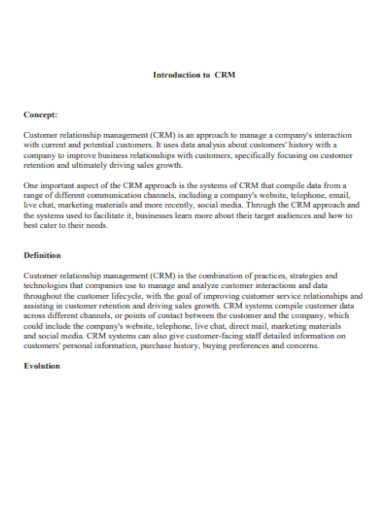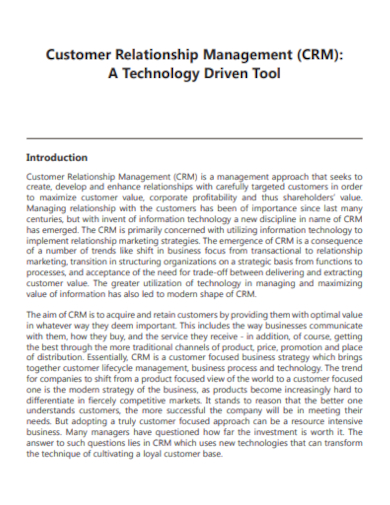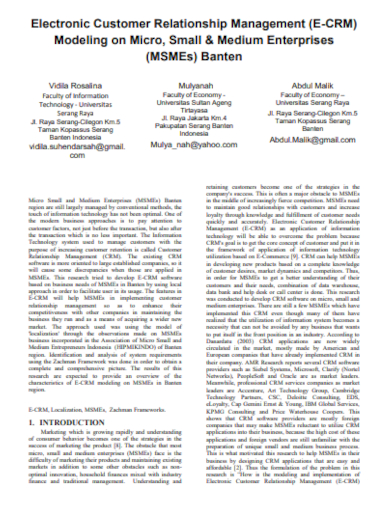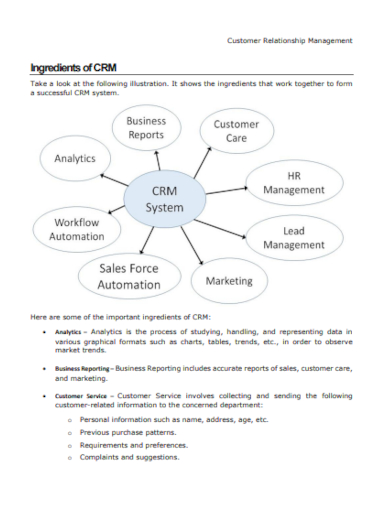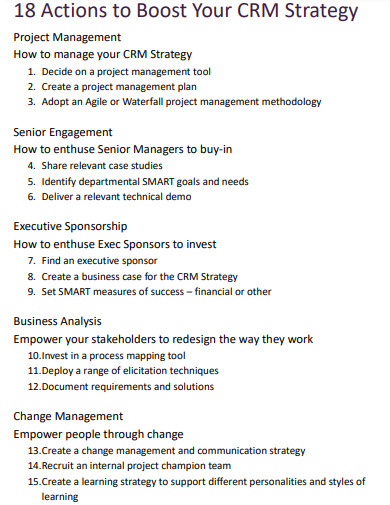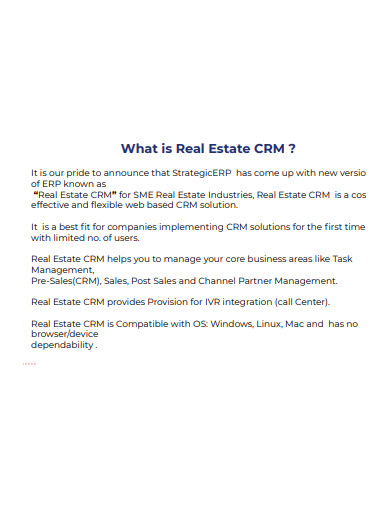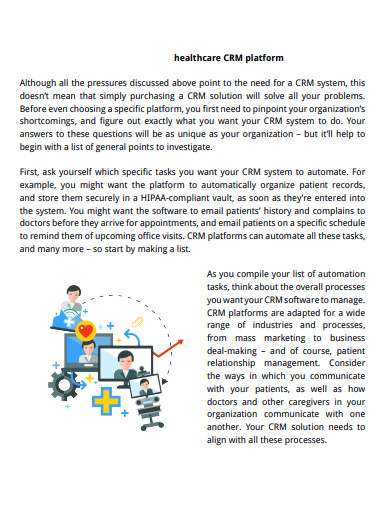Samples of customer relationship management software are often referred to as CRM samples. These may take the form of case studies, sample status reports, templates, or any number of other documents that demonstrate the application of CRM in a real-world environment. These samples can be useful for companies that are considering implementing a CRM system since they can provide insights and ideas on how to effectively use CRM to achieve particular business goals. This can be helpful for companies who are looking to adopt a CRM system.
10+ CRM Samples
1. Startup CRM Template
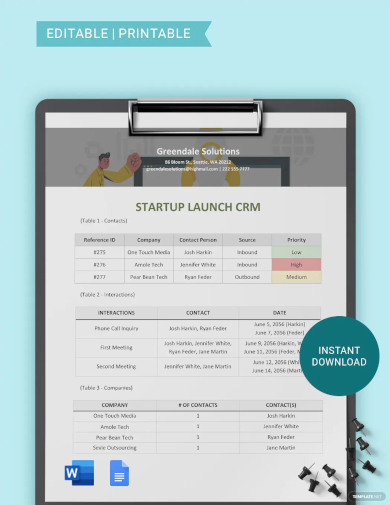
2. Small Business CRM Template

3. School CRM Template
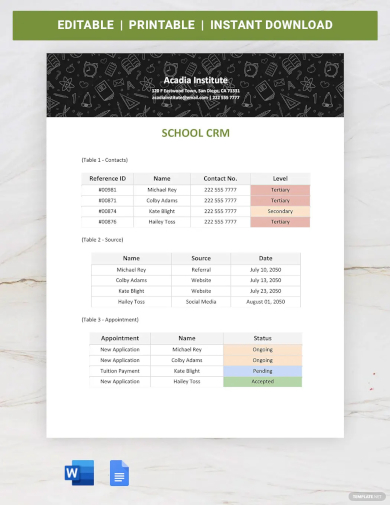
4. Sample CRM
5. Technology CRM
6. Electronic CRM
7. Business CRM
8. Actions to Boost CRM Strategy
9. Real Estate CRM
10. Healthcare CRM
11. Zoho CRM Edition
What Is CRM?
Customer Relationship Management (CRM) is a term that refers to the practices, strategies, and technologies that businesses use to manage and analyze customer interactions and data throughout the entirety of the customer lifecycle. These practices, strategies to overcome the risk, and technology roadmap are used by businesses. The purpose of customer relationship management (CRM) is to enhance existing customer relationships in order to propel business expansion.
How To Make a CRM?
CRM can be a powerful tool for company businesses looking to improve customer relationships and drive growth. If you’re considering implementing a CRM system, be sure to do your brief research and choose a solution that fits your specific business needs. There are a few steps you can take to create a customer relationship management (CRM) system:
Step 1- Gather Customer Data
It would help if you had correct and up to date information about your clients to handle customer relationships efficiently. This could include your contact information, as well as your purchasing history and any other pertinent particulars.
Step 2- Set Your System
After deciding on a platform, the next step is to set up your customer relationship management system. Importing data about your customers, creating fields specific to their needs, and configuring any necessary integrations with other software are examples of what this entails.
Step 3- Train Your Team
All team members must be familiar with how to make efficient use of your CRM system. You should consider offering training or documentation for your employees so they can get up to speed quickly.
Step 4- Monitor and Optimize
The quality of the data and procedures that are entered into a CRM system determines the degree to which it is utilized effectively. Review and evaluate the data in your CRM regularly, and make adjustments as necessary to improve your daily operations and realize your organizational objectives.
What are the benefits of CRM?
Improved customer service: By tracking customer interactions and history, businesses can provide more personalized and efficient service.
What are the components of a CRM system?
A customer database, marketing automation, and sales force.
How do businesses use CRM?
Tracking customer interactions and history
The purpose of customer relationship management (CRM) is to improve customer relationships and drive business growth. This is accomplished through the use of practices, strategies, and technologies that help businesses manage and analyze customer interactions and data throughout the customer lifecycle.
Related Posts
Sample Meeting Minutes Templates
Presentation Speech Samples & Templates
Ukulele Chord Chart Samples & Templates
Retirement Speech Samples & Templates
Weekly Schedule Samples & Templates
Contractual Agreement Samples & Templates
FREE 9+ Amazing Sample Church Bulletin Templates in PSD | PDF
Sample Business Card Templates
Sample Cashier Job Descriptions
Questionnaire Samples
FREE 10+ Sample HR Resource Templates in PDF
FREE 49+ Sample Job Descriptions in PDF | MS Word
FREE 23+ Sample Event Calendar Templates in PDF | MS Word | Google Docs | Apple Pages
Company Profile Samples
FREE 10+ Leadership Report Samples [ Development, Training, Camp ]

